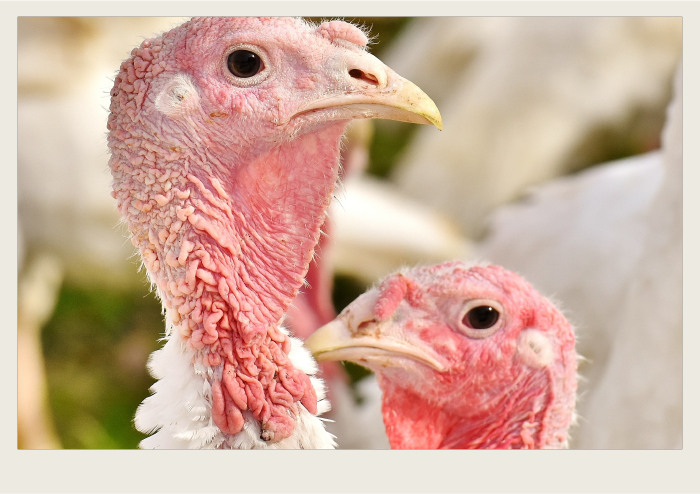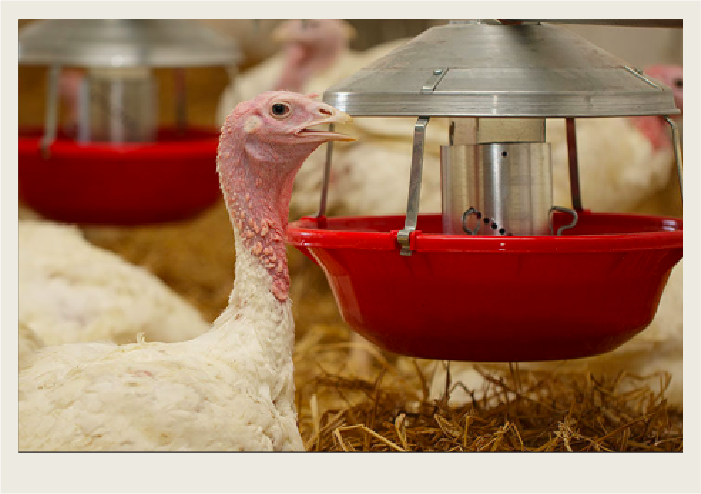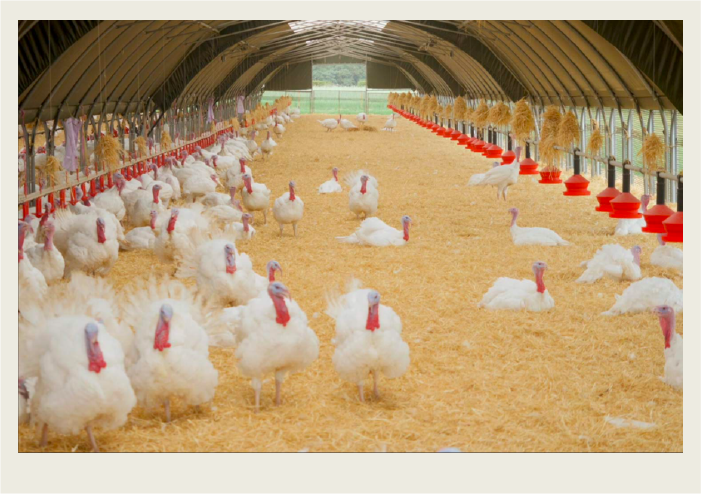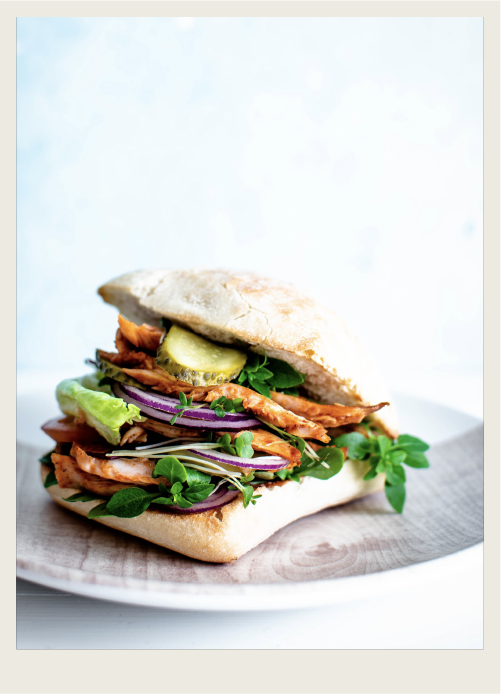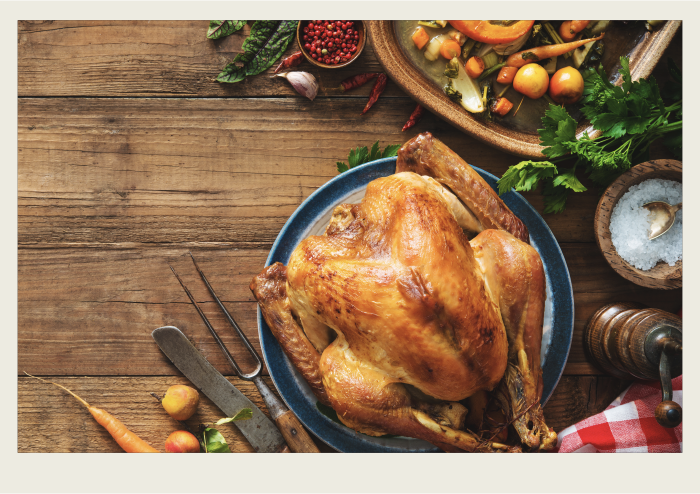Turkeys
Overview
Turkeys are the only farmed bird to originate in the Americas. They were domesticated around 200 BC in the areas that is now Mexico. The Spanish brought them to Europe after they found them in 1519.
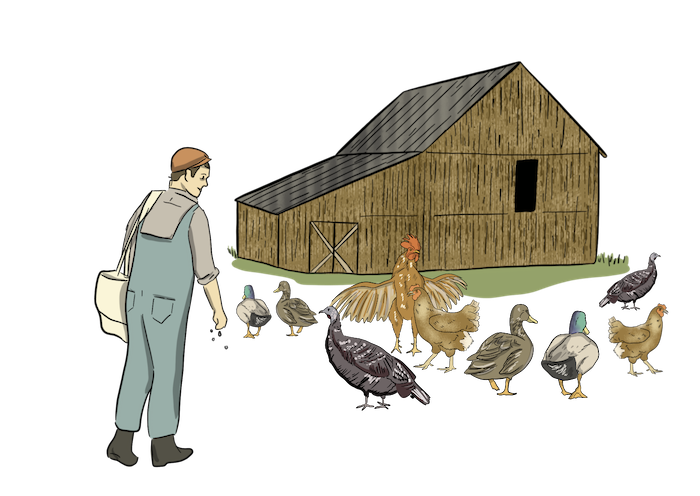
This early settler is feeding his turkeys, chickens, and ducks.
Industry Overview
In 2017, there were 11 registered turkey producers in Saskatchewan. Turkey farms in Saskatchewan vary in size between 20,000 and 150,000 birds per farm. These farms produced 5.4 million kilograms (12,000 pounds) of turkey meat that year.

Saskatchewan has 11 turkey farms that produce over 5.4 million kilograms of turkey meat each year!
The raising and marketing of turkeys are federally managed through a system known as supply management. This system makes sure turkeys are not overproduced and provides turkey farmers with quotas of what consumers want and will purchase. This quota system guarantees a fair and stable price for turkeys which helps to reduce the financial risk for turkey farmers.

Saskatchewan farmers raise turkeys using quotas so they are not overproduced.
Who is Who?
Animal Care
Farmers make sure their animals have a clean environment, nutritious food, and clean water. The barn is cleaned and sanitized before a new flock of poults (baby turkeys) come into the barn. This prevents disease spreading from one flock to another. In Canada, turkeys are not given hormones or steroids to help them grow faster.
Canadian turkeys are not given steroids or hormones.
Animal Housing
Turkeys have access to nutritious food and clean water at any time of the day. The barns provide them with a clean environment. The turkeys will not have contact with other birds which helps reduce the chance of getting or spreading disease.
Turkeys eat from feeders that can adjust their height as the turkeys grow.
Free-range turkeys can go outside in the warmer weather. They stay in a fenced off area to protect them from predators and other birds.
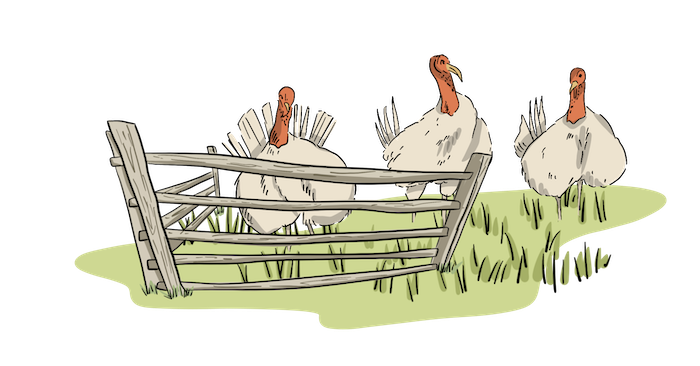
Free range turkeys can roam around outside.
Technology
Turkeys are raised in barns that have technology which controls the temperature, humidity, food systems, and water systems. These are all very important to raising healthy turkeys. If the barn suddenly got very cold, the turkeys would huddle together and could suffocate each other.
Turkey barns have a lot of technology that help make it a safe and clean environment.
Turkey farmers usually have their cell phones connected to the systems in their barn. Farmers will get an alert on their phone if something has gone wrong, such as a temperature change.
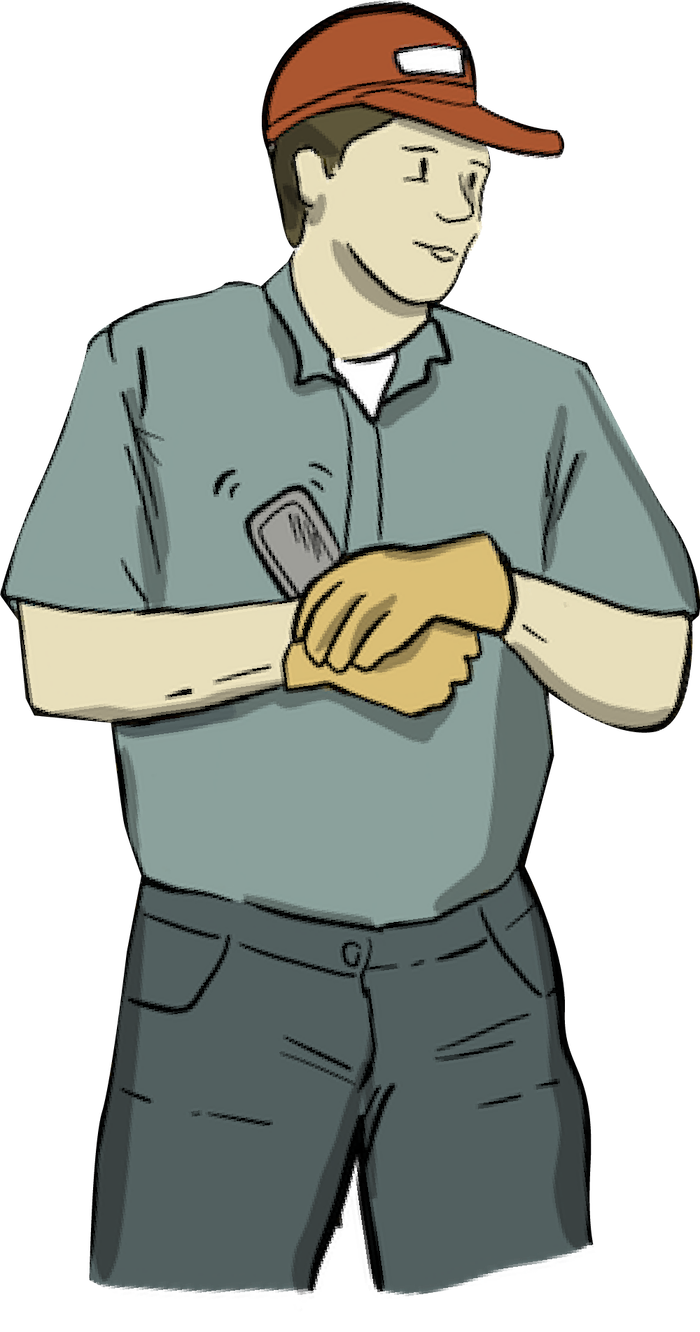
Turkey farmers get an alert on their cell phones if something has gone wrong in the barn.
Products
Turkeys provide us with meat such as thighs, breast, feet, liver, and heart.
After you roast a turkey, you can use it for many dishes including a turkey sandwich.
Nutrition
Turkey meat is popular at Christmas and holidays, but is a healthy option all year round. White turkey meat is from the breast and only has 3 grams of fat and is low in calories. Turkey dark meat is from the thigh and has 6 grams of fat and slightly more calories than the white meat. Turkey is a great source of protein.
Many Canadians have turkey as part of their holiday dinners.




